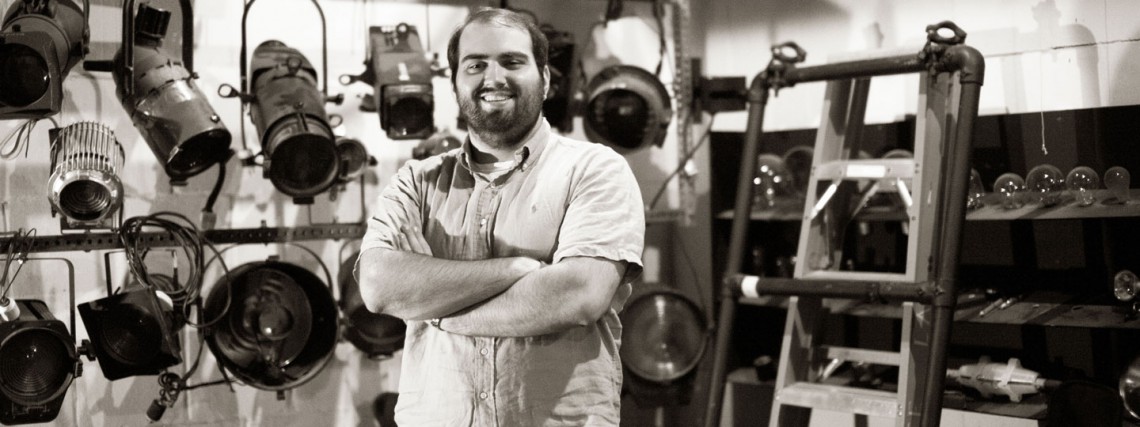 Lighting designer Matt Lathrop, ’16, developed a digitally operated remote control follow spot for a Stanford production last year.
Lighting designer Matt Lathrop, ’16, developed a digitally operated remote control follow spot for a Stanford production last year.
Groundbreaking theater technology in the making
When Stanford’s Ram’s Head Theatrical Society presented Les Misérables last year, it wasn’t just the telling of a tale of love and the power of the human spirit. It was a demonstration of ingenuity. Lighting designer MATT LATHROP ’16, developed a digitally operated remote control follow spot for the production.
“Rather than using a typical follow spot where the operator physically moves the light and therefore must be next to the fixture, I used computers to live-control moving head fixtures as follow spots,” said Lathrop, a computer science major who is minoring in theater and performance studies. “This meant that a fixture could be placed virtually anywhere and be used as a follow spot giving me, as a designer, greater flexibility in how I used follow spots in Les Misérables.”
Lathrop’s article about his follow spot is in the current issue of Theatre Design and Technology, the national journal of the United States Institute for Theatre Technology.
Lathrop, freshman STEPHEN HITCHCOCK , sophomore James Sherwood and their student group L.I.T.E.S. (Lighting Innovation and Technology Education at Stanford), are spearheading an even more complicated technical project for Ram’s Head’s spring production of Hairspray: an LED video wall. With advising from MICHAEL RAMSAUR, professor of theater and performance and L.I.T.E.S adviser, graduate student Katherine Breeden, and TAPS Shop Carpenter Daniel Cadigan, the team used 20,000 independently controllable RGB LEDs to make a 20-x-40-foot LED video wall.
The wall was built as part of the set for Hairspray, but the modular design allows for various configurations and could be used in different spaces on campus. “The goal of the project is to make the video wall as cheaply as possible, and then correct for its inadequacies with software written as a part of my computer science capstone project,” said Lathrop. The wall will be built for around a 10th of the price of a commercially available video wall.
“This LED project is progressing nicely and I expect that the team will be invited to present the project at next year’s United States Institute for Theater Technology Conference and Expo, and an international lighting design symposium in Hong Kong in the fall,” said Ramsaur.
